India 300–1200
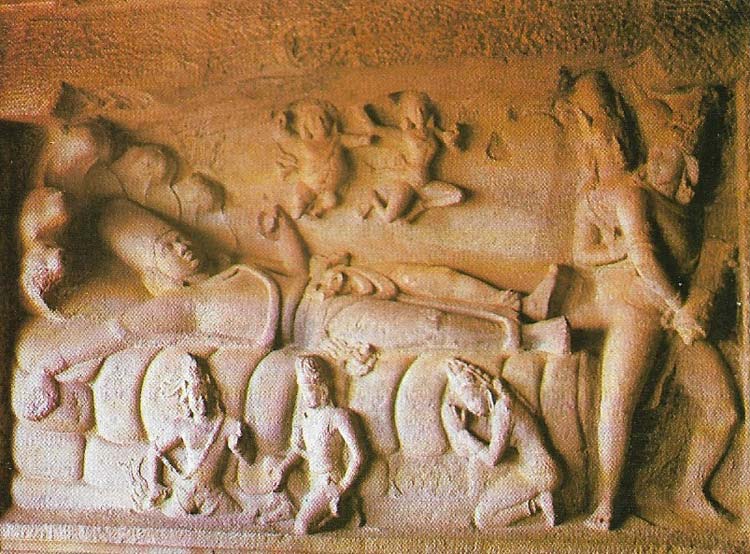
Figure 1. On the relief panel of this temple of the Gupta period, Vishnu is represented during his cosmic sleep on the coils of the seven-headed Naga. His consort, Lakshmi, is at his feet.
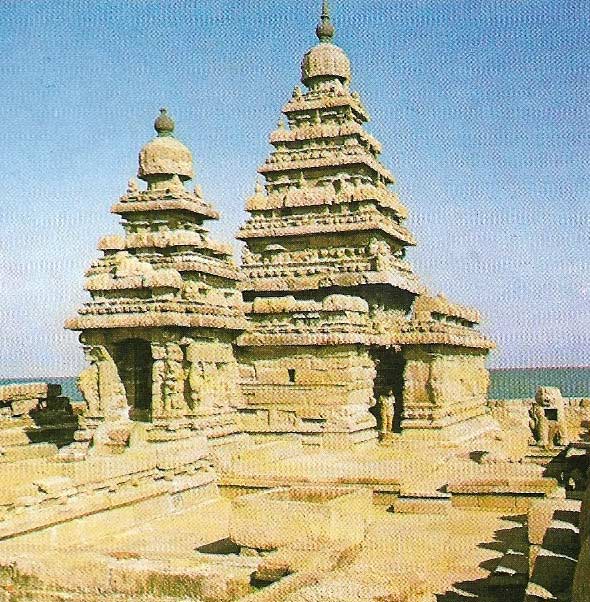
Figure 2. The greatest temple foundation by the Pallava dynasty of Kanchi, southern India, is the complex of Mamallapuram or Mahabalipuram, popularly known as the Seven Pagodas, south of Madras. The complex, built in 625–674, comprises a number of caves, a group of beautiful monolithic structures (the so-called rathas) and this splendid Shore Temple, dedicated to Shiva.
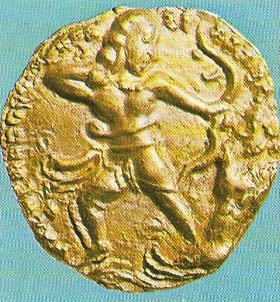
Figure 3. The numerous gold coins of the Guptas (the Bayana hoard alone contains 1,021 specimens) are an important source for the history of the period. Their distribution gives an idea of the areas controlled by various Gupta kings and the frequency of the minting reflects economic activity. The representations show how the Gupta kings wished the world to see them. This king appears as a fearless hunter slaughtering a lion with a bow and arrow.
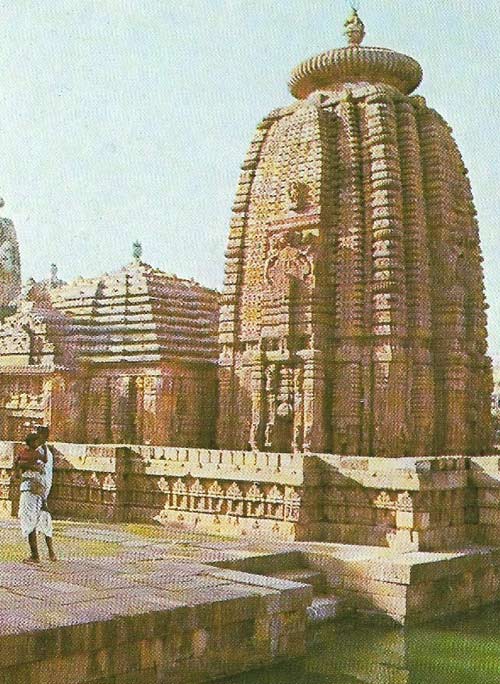
Figure 4. An older Shiva temple at Orissa shows the typical shape (shikhara) of a southern India temple. It is built on a platform of a pool that is used for ritual ablutions.
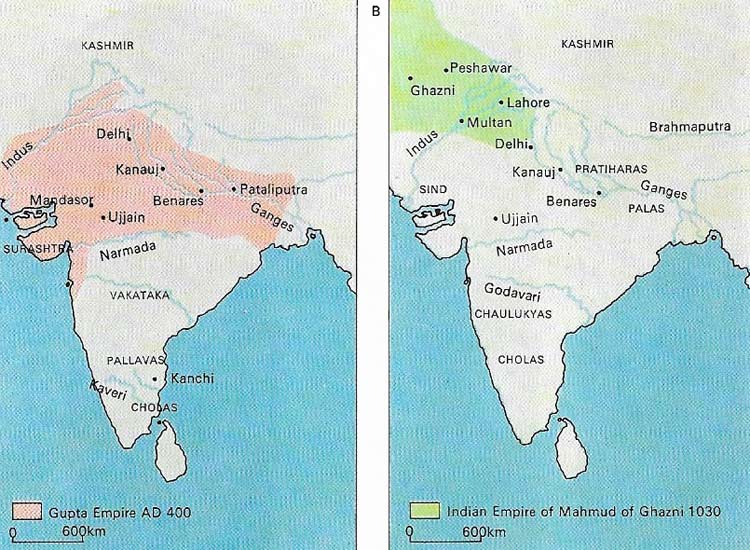
Figure 5. Although the Gupta Empire (A) represented the peak of classical Indian culture, its influence hardly reaches the south. After its fall, the north was rarely United, while the Pallava and Chola dynasties brought continuity to the south. Despite the lack of cohesion, the north easily resisted the Muslims and lost only Sind until the growth of Mahmud of Ghazni's empire (B) as a powerful and aggressive neighbor. Mahmud was not impelled by religious motives but Muslim raids continued until the establishment of the Muslim Sultanate of Delhi in 1206, marking the start of permanent Muslim influence in India.
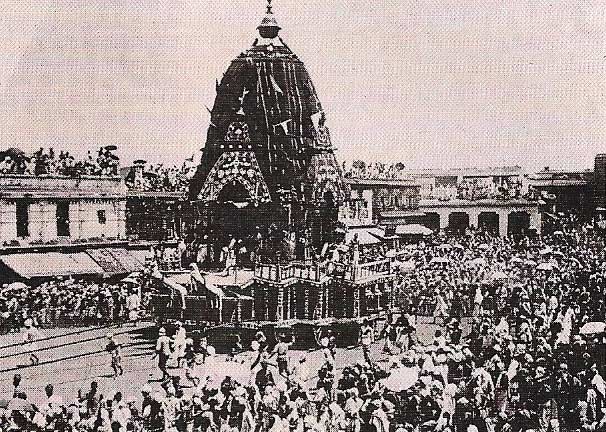
Figure 6. Puri is one of the great religious centers, attracting countless pilgrims from all over India during the annual cart festival of Jagannath (Juggernaut). The god used to be a tribal deity.
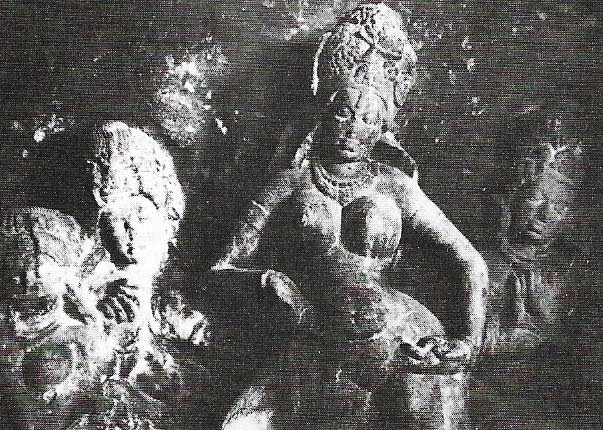
Figure 7. Although they were meant for monks, there is little trace of Puritanism in the Buddhist caves of the western Deccan. This relief, probably of the 6th century, depicts Taras, a kind of female saviour, who is performing a devotional dance.
After centuries of political fragmentation and foreign domination northern India was once more united under the Gupta dynasty (c. AD 32–-550), India's classical age. In southern India another great state gradually took shape under the Pallavas.
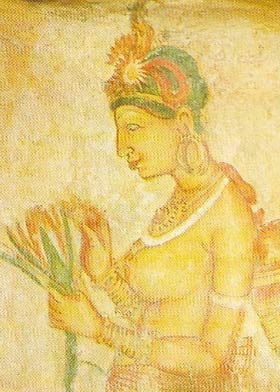 |
| Frescoes depicting beautiful maidens are painted on the side of a huge rock at Sigiriya, Sri Lanka, where a fortified royal residence was built in the fifth century. |
The Gupta dynasty and its empire
The Gupta kings, especially Samudra Gupta (reigned 330–375), Chandra Gupta II (reigned 375–415), and Kumara Gupta (reigned 415–455), founded and maintained, both by conquest and diplomacy, a great empire controlling nearly all of northern India. Good communications, security, and relative prosperity created an atmosphere in which Indian culture attained unequalled heights. Thus the works of the poet Kalidasa (flourished 5th century AD) achieved such a degree of perfection that they were often imitated but never surpassed. In art and architecture, too, Indian genius revealed itself in its most accomplished form of refinement and symbolism, but without the overemphasis of detail that typifies much Indian art after about the seventh century.
The material prosperity of India in this period is emphasized in the accounts of a Chinese Buddhist pilgrim, Fa-hsien (flourished 399–414), who visited India in the fifth century, and by the discovery of many gold coins of the Gupta Empire (Figure 3).
At the beginning of the 6th century the Huns invaded India from the northwest and penetrated as far as central India. This invasion has often been described as the main cause of the downfall of the Guptas, but it can be argued that the Huns would never have succeeded if the Gupta Empire had not declined owing to internal factors.
The expulsion of the Huns from India
Although the Huns were expelled after 30 years, northern India became divided between rival powers in Surashtra, Uttar Pradesh, and Bengal. There were important changes too in southern India in the present states of Madras and Kerala. A prosperous and cultured society, as reflected in classical Tamil literature, flourished in this area at least from the beginning of the Christian era. In the 4th century AD, the Pallavas made Kanchi (Conjeevaram) the center of a large kingdom. Although much smaller than the Gupta Empire in the north is was still of great importance. The Pallavas established a successful form of power-sharing between central and local government, which promoted political stability. The east coast of southern India remained under Pallava control until about 880, and from then until 1200 under that of the Cholas.
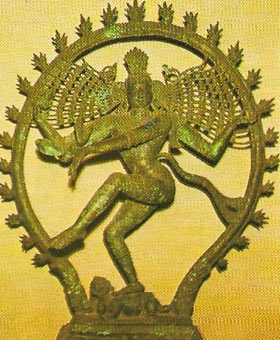 |
| One of the most striking forms of the gods Shiva is that of the four-armed Nataraja, dancing on top of a demon and surrounded by a halo with flames destroying the world at the end of an aeon. This is one of the finest bronzes of the Chola period (11th century). |
The Pallavas patronized the Brahmins who, in their turn, provided excellent educational facilities. In art and architecture a particular Dravidian style (named after the language spoken in central and southern India), culminating in the monolithic sanctuaries and rock reliefs of Mamallapuram (the "Seven Pagodas"), was developed (Figure 2). The Pallavas contributed more than any other Indians to the expansion of Indian civilization into Southeast Asia.
The influence of Harsha of Kanauj
Most of northern India was temporarily united by Harsha of Kanauj (606–647) whose career, admirably described by a Sanskrit writer (Bana) and a Chinese pilgrim (Hsuan Tsang, in 630–643), reflects high standards of government and reasonable prosperity.
After the time of Harsha, northern India showed progressive political fragmentation with larger states tending to split into smaller units which at first paid homage to the central authority but gradually became independent. Harsha's capital, Kanauj, was made the capital of the Pratihara dynasty in 750. The latter ruled paramount over the present states of Uttar Pradesh, Punjab, and Rajasthan, but before the end of the ninth century their effective authority was limited to parts of the Punjab and Uttar Pradesh while different Rajput dynasties, originally of tribal descent, ruled in Rajasthan. Bihar and Bengal were under the Buddhist Pala dynasty (c. 750–1150) but from the tenth century they shared with minor dynasties.
During such divisions the Muslim Mahmud of Ghazni (Afghanistan) (971–1030) invaded and plundered northern India many times between 1000 and 1026 (Figure 5). These were destructive raids, carried out mainly for booty. Although many Indian armies fought bravely, their resistance proved ineffective through internal rivalries and military miscalculations, such as over-reliance on elephants. Further political, but not cultural, decline led to new Muslim invasions and by the end of the 12th century most of northern India had come under the control of the Muslim sultanate of Delhi.
Sanskrit literature of the post-Harsha period offers many excellent works, although few of the quality of the earlier periods. The most important historical text of ancient India, the Kashmir Chronicle, belongs to the 12th century. In art and architecture some of the greatest achievements, such as the temples of Orissa and Khajuraho, belong to this late period.
There was no decline in southern India where the Cholas established one of the greatest Indian empires. Their kings invaded Sri Lanka and Bengal and even undertook a great maritime expedition to Southeast Asia. While northern India suffered political fragmentation and Muslim invasions, the Chola kingdom established conditions in which Hinduism flourished.
 |
| Vishnu, one of the principal gods of Hinduism and the supreme deity for the Vaishnavas, some of whom find a close analogy between religious experience and sexual love, has revealed himself as a saviour of mankind in many different forms, in particular in ten descents (avataras) as a man or as an animal. His most celebrated avatara was as Krishna, the divine shepherd and king-philosopher. Of the animal avataras, the Boar (varaha), shown here with elaborate ornamentation, is most frequently represented. In Hindu mythology the god is believed to have descended in this form to rescue the earth, which had sunk in the ocean. |
